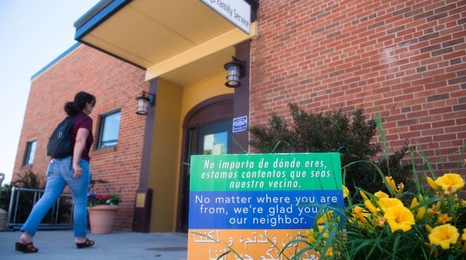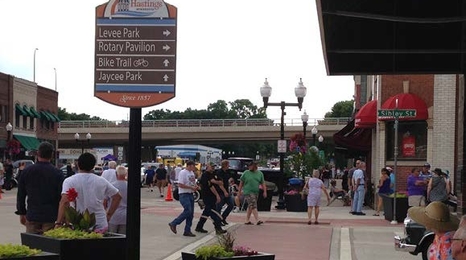How have leaders in your community shown resilience and moved important projects forward? Do groups across your community work to make it more welcoming and inclusive, pass a referendum, or incorporate youth into their governance process? Are you celebrating a new festival or community event, a repurposed building, or a successful housing or childcare initiative?
Have you seen short and long-term impacts from these projects, but aren’t sure how to measure or articulate it?
Do you want to learn more about how and why a project worked?
Try a community ripple map
Ripple Effect Mapping (REM) is a qualitative evaluation method that helps show and tell the story of a project, and what effects it had. Communities and organizations often use REM reports to bring visibility to their work, apply for additional funding, attract media coverage, or recruit new residents.
Interested in building a ripple map for your community?
University of Minnesota Extension and Blandin Foundation seek up to 10 rural Minnesota communities to participate in a new ripple effect mapping project. Why are we doing this project? It’s simple:
- Rural Minnesota’s communities and Native Nations shine with community resilience. We take every opportunity to share that good rural work.
- Staying grounded in communities and their current successes and challenges is one way we can keep a pulse on rural Minnesota communities, so our resources help you build community capacity to meet the world’s ever-changing dynamics.
- We want communities to have an asset-based process that delivers a tool you can use to take your good work even further.
How will we select communities? Selection criteria include:
- Diversity in community size.
- Diversity in geographic location/region. Community must be located in rural Minnesota with a population under 35,000.
- Diversity in culture. We encourage applications from communities within the 11 Native nations that share geography with Minnesota.
- Highlighting a variety of topics and challenges the community has addressed.
You and your community will get:
- The opportunity to energize, motivate, and engage community members as you reflect, celebrate, and share your stories of resilience.
- The chance to capture what worked well and what could be strengthened so you can successfully do it again.
- A way to inspire additional action by hearing stories of community resilience and other examples of leadership that spur others into action as well.
What is your commitment?
People and time
Work with us to recruit a group of 10 – 20 people who bring diverse perspectives from your project. This group will participate in a three-hour, in-person ripple effect mapping process in your community led by two trained facilitators. You will also identify a key contact for assisting with community logistics (e.g., planning the location, a meal, child care).
Funding
Free! Extension and Blandin Foundation will cover the cost of the Ripple Effect Mapping process, meeting venue, food, and beverage expenses.
We welcome communities to provide in-kind support for other expenses related to the event; childcare, transportation, or other barriers participants may have.
Timeline
- Applications due: February 29, 2024
- Community selection: By March 29, 2024
- REM Meetings: April-July
- Story maps complete: Within four months of REM meeting
Questions?
Contact us: Holli Arp (arpxx001@umn.edu) / Becky Adams (rmadams@blandinfoundation.org)




